La Route Rose de la Provence: A Wine Tour in the South of France
Guy Hibbert discovers great estates and delicious destinations.
Flights to Nice: check. Passports: check. Rental car: check. Let’s go! Wearing our rosy hues, let’s taste the quintessence of French pleasures: the spirit of an open road, the charm of historic towns and villages and the taste of the sun in a glass.
Rosé sales are on the rise and Provence claims the high end of the market. I spoke to Elizabeth Gabay, rosé wine expert and author of Buyer’s guide to rosé wines from the south of France. “With a focus on quality, everyone is looking more for rosés that reflect their terroir and rosés that age well,” she said. “For good rosés, it will no longer be about finishing the rosé in the fall and running for the new vintage in the new year.”
The village of Carcès in Provence, seen through the vineyards © Shutterstock
A rosé under another name…
In this mini-tour, we focus on the wines you are most likely to encounter – the AOC Côtes de Provence (Appelation d’Origine Contrôlée). This AOC produces the vast majority of rosé from Provence – around 116 million bottles. Nestled in the middle of 20,000 hectares of vines, there are approximately 350 producers and five geographical sub-regions that deserve to be known because they each have their specificities: Côtes de Provence Sainte-Victoire, Côtes de Provence Fréjus, Côtes de Provence La Londe Côtes de Provence Pierrefeu, and Côtes de Provence Notre-Dame des Anges. It may take a few hours to drive from one side of this region to the other, but there is no need to run on the highway for now because the vibrant city of Nice is the surprising first stop on our wine route.
Take a break to admire the beauties of the Old Town of Nice, shop in the markets of Cours Saleya and be ready the next day for an easy walk in the hills behind Nice. This is called the hinterland of Nice, and we find there a wine appellation appreciated by locals and connoisseurs, but little known elsewhere. Not far from the large DIY stores on the western outskirts of Nice are the perched vineyards of the AOC Bellet. Facing south and west, sunny, cooled by the winds blowing down from the Var valley or cooled by the salty sea air, the sloping terroir, with its sand-limestone pebble soil, produces white, red and rosé wines from great quality and original flavors. Here, for their rosés, they use a local variety called Braquet, a fragrant black variety. It has nothing to do with the classic Provence rosé made from cinsault and grenache, nor is it the cheapest rosé, but it is unique and if you are interested in unusual wines, it is a fascinating detour.
There are nine estates on the steep hillsides overlooking Nice and towards Cap d’Antibes. For a glamor tasting try Château Crémat. Once a 1920s Gatsby-esque party villa, it has been painstakingly restored and its historic ties to Coco Chanel come to life in the sumptuous interiors. On the other hand, the nearby Domaine de la Source is a small family business where the welcome is friendly and the wines just as rewarding.
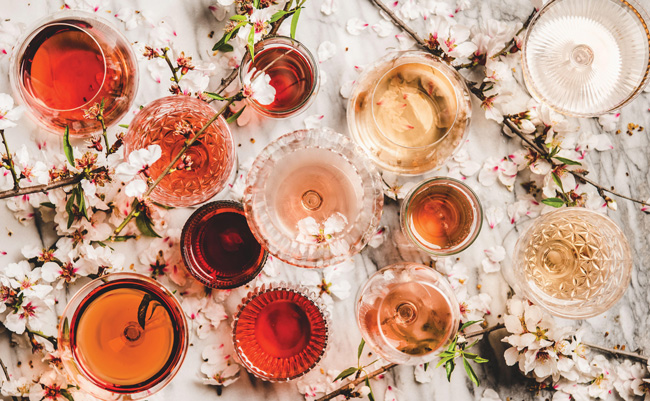
Rosé comes in many shades, from deep, almost red hues to vibrant salmon to the palest pinks. Peach, Melon, Mango, Pomelo, Mandarin and Currant are the official names of the six main colors of rosé wines from Provence © Alamy
Inland
Leaving Nice, we head west until the ocher and pink Estérel massif dominates the horizon. Unlike the predominantly limestone geology of much of Provence, this area has volcanic origins and is a nice place to hike if you have time to stop. Near the seaside resort of Fréjus, we enter the first of the classic regions of the Côtes de Provence. But first I recommend an interesting detour inland which will take you to the gates of the Maison des Vins Côtes de Provence in Les Arcs sur Argens. This shop acts as an ambassador for local wines: take a class, try a free tasting and find out what makes these wines so special – English, Dutch, French and German are all spoken. And you can buy from a selection of over 800 wines from 270 producers – all at estate prices.
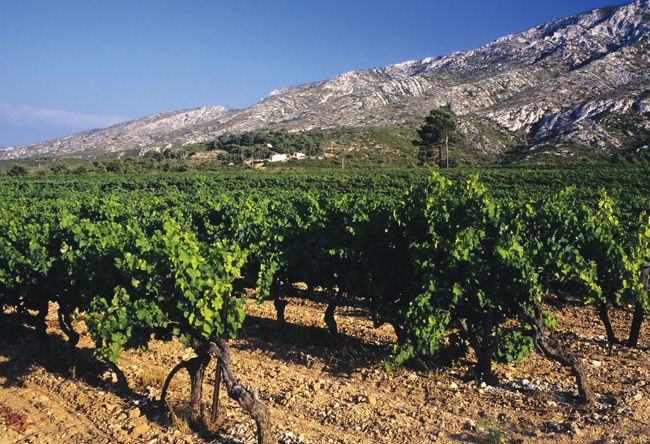
Vineyards of the Massif des Maures © Shutterstock
Alternative Riviera
Our tastings Start at the nearby Château des Demoiselles, where you can taste their delicate pale salmon-coloured rosé, which is proudly organic and vegan. Its twin vineyard is Château Sainte-Roseline, which produces beautiful classified growth wines including a rosé on behalf of Kylie Minogue Wines. For an equally starry tasting impossible to beat Château d’Esclans, the creamy yellow Tuscan-style chateau that produces no less than six rosés for all occasions. D’Esclans is the birthplace of the legendary Whispering Angel rosé, the first French wine imported into the United States, which is acclaimed by critics and consumers alike.

Château de Crémat plays on its Coco Chanel heritage for a dose of glamor © Château de Crémat
Saint-Tropez’s international reputation for superyachts and tanned celebrities was established decades ago. But for a very different experience, visit out of season and be sure to stroll through the quaint historic district known as La Ponche. If you happen to be there in peak season and it gets too busy, you can leave the crowds behind and escape to one of some 30 nearby Côtes de Provence vineyards. On this sunny promontory, the vines benefit from sea breezes and clay soils which create fresh and fruity rosés. At the top of the tree is the ubiquitous Château Minuty, which has been owned by the Matton-Farnet family for over 80 years and produces exquisite prestige rosé as well as more affordable bottles for everyday consumption.
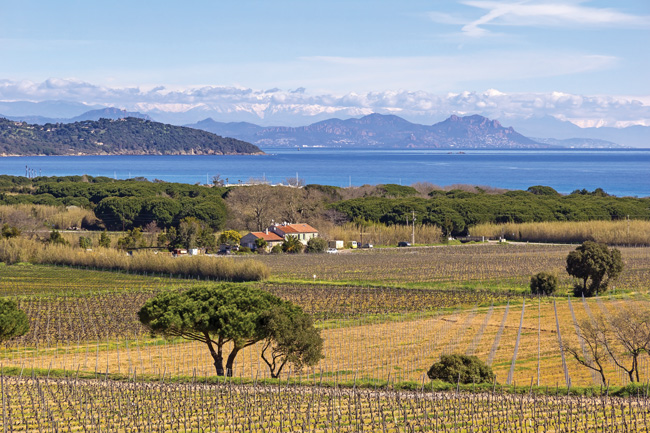
The Mediterranean coast near Saint-Tropez, with vineyards in the foreground and the Alps in the background © Shutterstock
Just a 20-minute drive from the hedonism of Saint-Tropez is the Massif des Maures, an inland plateau dotted with some of Provence’s finest winemakers. Let us quote for example the Château Saint-Maur, one of only 22 in the region rewarded classified growth status. These are rosés that can appear happily on cards of the wines great Parisian restaurants. Château de Chausse, now in American hands, is an estate where you can taste two different rosés, one a typical pale pink made from Cinsault and Grenache, the other a coral hue made from Syrah and Rolle grapes. There are tastings abound in this area, you might want to stop at the magnificent Château Saint-Roux, which offers a wide range of wine tourism activities.
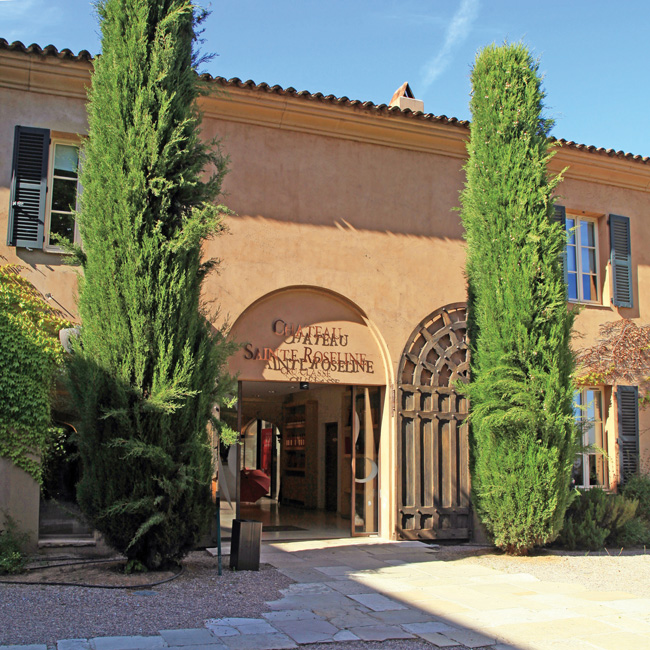
Château Sainte-Roseline produces fine classified growths © Shutterstock
Beauties on top of a cliff
Now return to the coastal road and head from Rayol-Canadel-sur-Mer to Le Lavandou for a cliff-top walk with stunning views. Stop for lunch and stroll through the charming hilltop town of Bormes-les-Mimosas, one of France’s famous Flower Villages (and, of course, host of a mimosa festival every February).
This is the Côtes de Provence La Londe region. For a wine tasting with a magnificent view of the Île du Levant and Port-Cros (and a picturesque castle) head to Château de Brégançon. If you fancy a glass of rosé with fine sand between your toes or a refreshing swim in the Mediterranean, stop for lunch at Château Léoube (owned by British brand Daylesford Organics), which has a café in edge of the beach a few meters from the vines. . Or for a swim without wine, a short drive along the coast will bring you to the turquoise waters and sandy pine-lined bay of Plage de l’Argentière.
From there you find yourself in the original (and some say the best) of the French Riviera. Hyères and the Giens peninsula were popular over a century ago with the British aristocracy and a handful of famous European writers, but since then it’s largely been a holidaymaker’s secret. French. The town of Hyères itself is a delight to discover, or head to the island of Porquerolles where you can stay at Auberge des Glycines and visit the best winery on the island, Domaine de la Courtade .
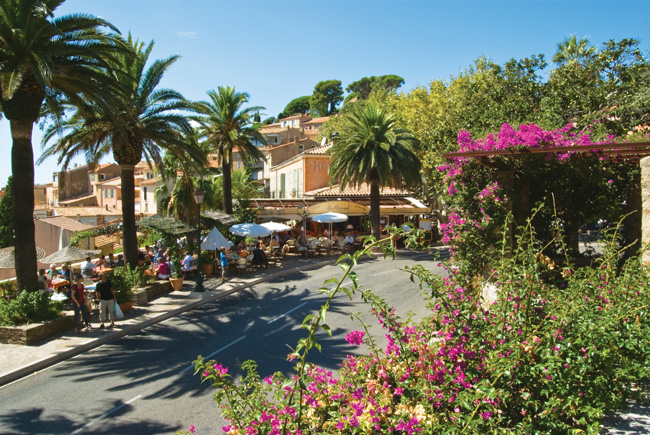
Take the time to relax in the scents of Bormes-les-Mimosa © Alamy
Back on dry land, it’s time to head north inland towards the Côtes de Provence terroir known as Pierrefeu. An exceptional tasting awaits you at Château Sainte-Marguerite, classified growth since 1955. Their Symphonie rosé is highly regarded and the 2019 vintage received 97 points at the Decanter World Wine Awards in 2020, which is remarkable for a wine that costs around €20. There’s a lot to see in this area, so you might want to book a night at a winery. The guest rooms The rooms at La Commanderie de Peyrassol offer a rustic and elegant Provencal atmosphere. To eat at the restaurant Chez Jeanette is to taste the palest rosé of Peyrassol followed by a stroll or perhaps a carriage (by horse-drawn carriage) around an impressive sculpture garden.

Hyères is another fabulous destination in this part of France © Shutterstock
Green interior
In the final part of our tour, we will head further inland to Provence Verte, the green heart of Provence. The charming old town of Lorgues is an interesting stop, as are the neighboring hilltop villages of Tourtour and Flayosc. There are 14 wine estates to visit around Lorgues, but the highlight would have to be the Chateau de Berne. Why not treat yourself to a little end-of-trip sweetness? Installed on no less than 1,000 hectares of land, it is a Relais et Châteaux hotel with spa, swimming pool and restaurants. A first-rate wine estate completes the picture: in their famous square bottles, the Bernese rosés are admired. The nearby village of Cotignac is charming and has an impressive cliffside promenade with cave dwellings. For a more affordable accommodation option in this region, you can try Clos de l’Ours, a family-owned vineyard whose L’Accent wine enjoys excellent reviews.
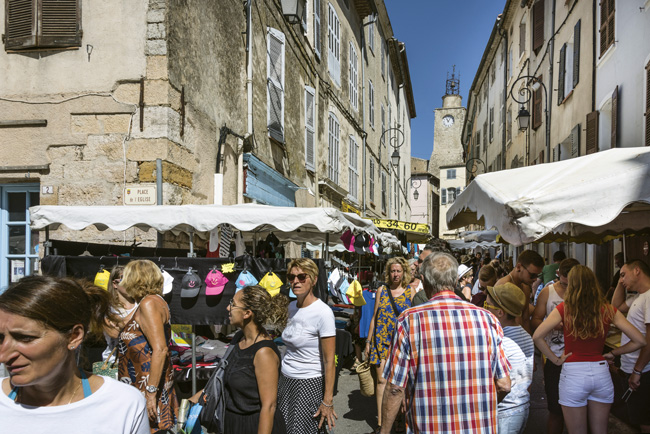
Soak up the atmosphere of the charming old town of Lorgues © Shutterstock
Provence rosé is in good hands. The vineyard owners are largely committed to producing high quality organic wines that respect the terroir and local traditions. And unsurprisingly, wine tourism is booming: as head of communication at the CIVP (Interprofessional Council of Provence Wines), Carole Guinchard told me: “The wines of Provence are already a brand.
If, like me, you are still familiar with this brand, then a tour of this beautiful region is the best way to discover more. Health and good road!
Excerpt from France Today magazine
Main photo credit: Touring the vineyards of Provence is a wonderful way to experience the wines and the countryside itself © Alamy


Comments are closed.